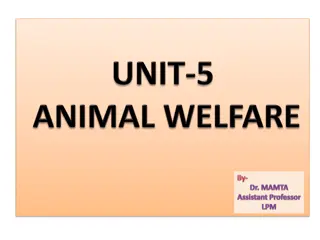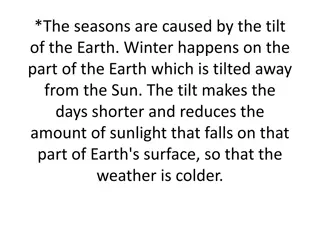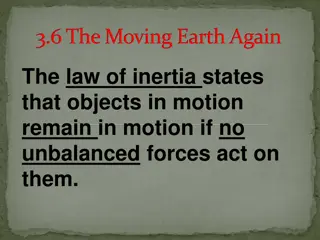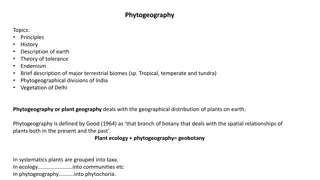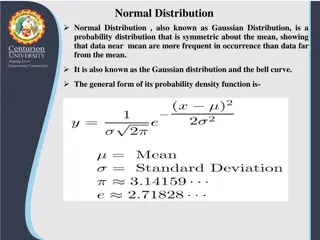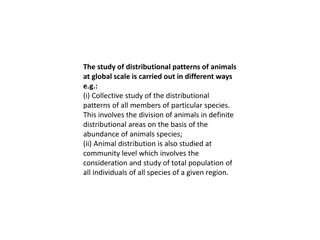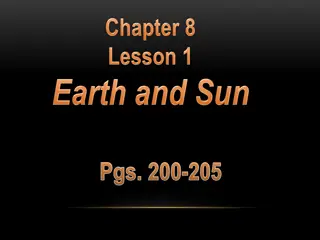Animal Distribution on Earth
Zoogeography studies the distribution of animals on Earth within the biosphere, which is divided into marine, freshwater, and continental biocycles. The ranges of species vary based on historical factors and their ability to spread, influenced by ecological valence. Understanding these concepts helps explain the diversity and adaptation of animals in different habitats.
Download Presentation

Please find below an Image/Link to download the presentation.
The content on the website is provided AS IS for your information and personal use only. It may not be sold, licensed, or shared on other websites without obtaining consent from the author.If you encounter any issues during the download, it is possible that the publisher has removed the file from their server.
You are allowed to download the files provided on this website for personal or commercial use, subject to the condition that they are used lawfully. All files are the property of their respective owners.
The content on the website is provided AS IS for your information and personal use only. It may not be sold, licensed, or shared on other websites without obtaining consent from the author.
E N D
Presentation Transcript
ANIMAL EXTENSION ON EARTH V ukov materi l EK 01 - 17 Tv rce: Ing. Marie Jir kov Tv rce anglick verze: Mgr. Milan Smejkal Projekt: S anglick m jazykem do dal ch p edm t Registra n slo: CZ.1.07/1.1.36/03.0005 Tento projekt je spolufinancov n ESF a SR R
ZOOGEOGRAPHY Zoogeography is the science that studies the distribution of animals on Earth Border field
BIOSPHERE Zoogeography studies this The biosphere is the part of the planet Earth, which is populated by living organisms
BIOSPHERE IS DIVIDED INTO Biocycles marine freshwater continental Animals live here in a different way.
RANGES Range - the geographical area within which species can be found Definition of ranges a set of all environmentally suitable habitats Habitats a random occurrence of individuals Habitat the area that meets the environmental requirements of animals and can be marked on the map
RANGES The ranges of each species varies The size of ranges is given by : historical factors the ability of species to spread ecological valence
HISTORICAL FACTORS In continental glaciation disappearance of thermophilic species In continental warming cold-species transmission to the north
THE ABILITY OF THE SPECIES TO SPREAD Organisms spread : actively passively Active component ability of active movement most developed in birds. Passive component air, water current, contact hosts microorganisms, spores, parasitic organisms
ECOLOGICAL VALENCE Important for the formation of ranges The range of any kind is not uniform Survival conditions are optimal in certain parts and worse in other parts Species with wide ecological valence inhabit larger ranges.
THE LARGEST RANGES ARE Cosmopolitan ranges Often it is connected with the species that can be found near human settlements - synanthropic species , which: Eating stocks a rat Eating plants gypsy moth Parasitizing louse
OTHER BIG RANGES: Circumtropical Occupies the 2-4 tropical continents such as tapir ranges Circumpolar in the Arctic area such as Arctic fox
SMALL RANGES AND MICRORANGES There are only a few animals with large ranges Most species inhabit small ranges and microranges .
RANGES CHANGE arise vanish crumble
ENDEMIC RANGE certain animals are found only in a particular place - in an endemic range These are called endemism, such as kiwi occurs only in New Zealand
CONTINENTAL BIOCYCLE We divide it into six major geographical regions that are approximately the same as the continents. Australian region Ethiopian region Indomalayan region Latin American region Nearctic region Palearctic region
WORKSHEETS - REVISION Why is zoogeography referred to as a borderline field? What is the biosphere? How can it be divided? The size of the range is determined by . What is an endemic range? Please provide some examples.
SOURCES: BRANI , Martin. Z klady ekologie a ochrany ivotn ho prost ed . 2. vyd. Praha: Informatorium, 1999. ISBN 80-86073-52-1. PAP EK, Miroslav a kol. Zoologie. Praha: pedagogick nakladatelstv , 2000, ISBN 80-7183- 203-0. KVASNI KOV , Danu e. Z klady ekologie. Praha: Scientia,spol.s r.o., 1994, ISBN 80-85827- 84-0
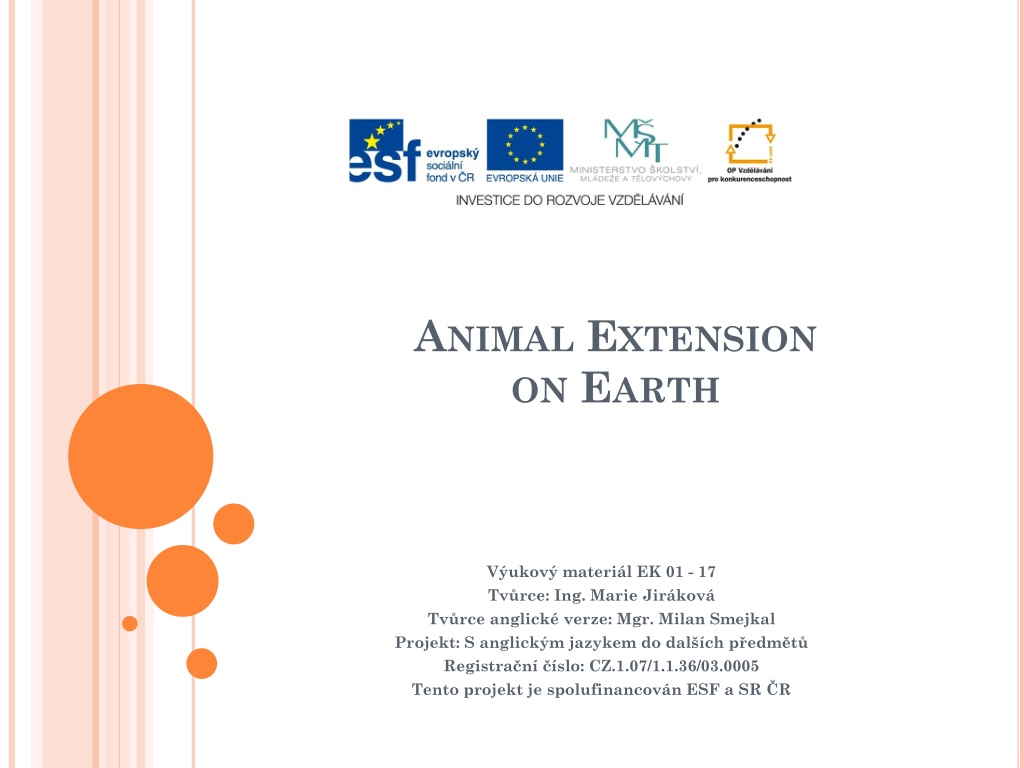
 undefined
undefined




















